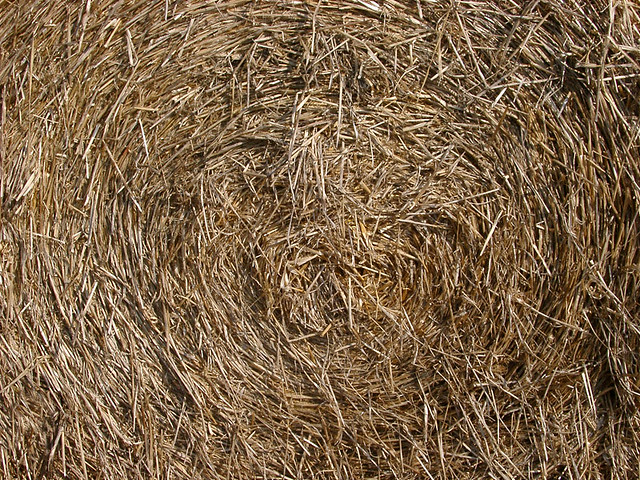Can my rabbit live without hay?
Rabbits can't live without hay! It is the most important part of the rabbit diet and should be 80% of everything a rabbit eats in a day. You must ensure that your rabbit has hay available 24 hours a day. The rabbit cannot eat too much, but too little. As a guideline, you can keep your rabbit eating at least its own volume of hay per day.
Why is it so important?
It is high in fiber, low in fat and protein and ensures optimal intestinal function. Rabbits have very long, but little muscular intestines. This means that they cannot transport the food themselves from the stomach to the anus. By eating small amounts throughout the day, the fiber-rich food slurry is slowly transported from the stomach through the intestines where it can be digested. It is also indispensable for proper tooth wear. Hay is very tough and by moving its molars horizontally, the rabbit grinds it fine and immediately wears down the teeth and molars.
Is every kind the same?
Hay is never just hay! Every kind is different. This is due to the use of different types of grass and the quality of the harvest. The nutrients in the variety depend on the quality of the soil, the weather, the time of harvest and how and how long it is stored. Even if you always carry the same brand, the quality can vary. In the store you will find different types of hay. It is recommended to occasionally change brands or mix types.
meadow hay
the most common type of hay is meadow hay† This is a mix of different grasses with some herbs every now and then. The most common types of grass in this hay are: Perennial ryegrass, Lucerne, Red fescue, Reed fescue, Timothee, Field meadow grass and Kropaars.
Choose a variety that is more loosely packed, which means a slightly better quality, because there are less dust and short pieces in the hay. Meadow hay generally has a low protein content and a somewhat higher calcium content. Pasture hay is a budget-friendly option that is great to feed if you have rabbits that aren't fussy hay eaters or suffer from bladder, kidney, or dental problems.
The analysis can of course vary per brand, but on average you can assume: fiber content 25-28% proteins 12-14% calcium 0,5-1%
mountain meadow hay
Mountain meadow hay contains slightly more grasses than ordinary meadow hay. Mountain meadow hay is often of a higher quality, greener, fresher and with a slightly higher fiber content than meadow hay.
There have often been fewer fertilizations, which means that it has a lower protein content. Mountain meadow hay usually contains the following types of grass: perennial ryegrass, red fescue, reed fescue, timothy, meadow meadow grass, alfalfa, bromus and buttercup. It also contains mountain herbs such as plantain. clover and arnica.
The analysis can of course vary per brand, but on average you can assume: Fiber content 33% proteins 7% calcium 0,6%
herbal hay
The most herbal hay is based on meadow hay. Certain herbs are then added to this. Because it is packed more loosely, the quality is therefore also somewhat higher than with the standard meadow variant and the addition of herbs usually means the hay is also perceived as tastier. It can therefore also be a very good solution for rabbits that have a hard time eating hay.
The analysis can of course vary per brand, but on average you can assume this: fiber content 25-30% proteins 7% calcium 0,5-1%
Timothy hay
Timothy hay has a very high fiber content and a low calcium and protein content. This makes the timothy variant extremely suitable for rabbits that are too fat or have bladder and kidney problems, but it is also recommended for healthy rabbits to make the timothy variant part of their regular diet because it can help prevent problems.
The analysis can of course vary per brand, but on average you can assume: fiber content 32-34% proteins 8-11% calcium 0,4-0,6%
But my rabbit doesn't like hay
Every rabbit likes it, but sometimes bunnies don't eat it. How is that possible? There are a number of reasons why a rabbit does not eat or eats less hay.
1. A health problem
If your rabbit used to eat hay and now turns his nose up at it, he may be in pain.
Rabbits with abdominal pain eat less or no more. It could also be that the problem is in the rabbit's mouth. Sometimes the molars and teeth do not wear well, causing painful hooks and the rabbit can no longer chew properly. Therefore, always have your rabbit checked by a veterinarian if you notice any changes in eating behaviour.
2. The owner
If a health problem has been ruled out, there is only 1 reason that the rabbit refuses to eat and that is: the owner. We like to give our rabbits a lot of kibble (because a rabbit must always be able to eat) and also all kinds of tasty things, such as different rabbit sweets. But that makes the rabbit leave it alone (we also prefer sweets to broccoli).
How do I make sure my rabbit will eat enough hay again
It is important to immediately stop with all less healthy extras, such as candies and nibble bars. In addition, it is important that you do not give too much dry food.
Choose a high-quality pellet and weigh 20 grams per kg of rabbit. This is, for most rabbits, sufficient to maintain a healthy weight. If your bunny needs more or less, you can of course adjust this.
In addition, it is important to change the hay at least once a day, then it remains the most attractive for the rabbit and you can of course also choose a herbal variant to start with.
Did it work? Nice! Don't forget to change the variety regularly for the right balance of vitamins and minerals.


